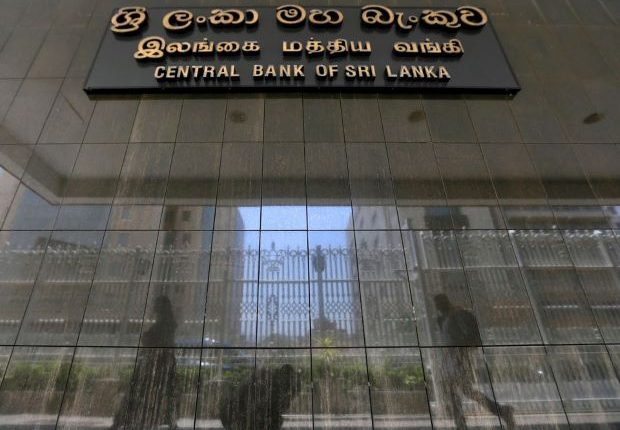Sri Lanka seen holding rates as inflation fight continues; IMF deal key

By Uditha Jayasinghe
COLOMBO – The Central Bank of Sri Lanka (CBSL) is widely expected to hold interest rates steady this week, having raised them last year to their highest in more than two decades in order to fight runaway inflation while seeking an International Monetary Fund (IMF) bailout.
With Sri Lanka’s economy in the throes of the worst crisis since independence from Britain in 1948, the government is waiting for financing assurances from China, its largest bilateral lender that would help clinch the $2.9 billion IMF package.
CBSL raised rates by a record 950 basis points last year. But, at its last policy meeting in November the central bank held the standing deposit facility rate and standing lending facility rate unchanged at 14.50% and 15.50%, respectively.
Thirteen out of 14 economists and analysts polled by Reuters expected CBSL to do the same again when it meets on Wednesday (25) as any reduction in rates should wait until inflation falls further and the IMF money replenishes its currency reserves.
After hitting an annual peak of 68.9% in September with food inflation climbing to 93.7%, consumer inflation moderated to 57.2% in December. “The central bank will not cut policy interest rates till inflation comes down significantly but through moral suasion they are trying to narrow the gap between policy and market interest rates,” said Murtaza Jafferjee, CEO of Colombo based JB Securities.
Interest rates on three-month government securities have eased to about 30% from a peak of around 32% earlier this month, analysts said.
The higher rates helped cool demand in the import-dependent economy and reduced demand for dollars.
Sri Lanka’s central bank induced a formal devaluation of the rupee by up to 15% in March last year, taking one of several steps analysts said was crucial to obtaining a IMF bailout, following which the rupee tumbled further losing nearly 50% over the month. Since then with CBSL raising rates to contain inflation and curb demand for imports, the rupee has stabilized.
IMF Bailout in Focus
India told the IMF last week that it strongly supports Sri Lanka’s debt restructuring plan as the country tries to put its heavy debt burden on a sustainable path to secure a four-year program with the global lender. “If Sri Lanka can get the IMF program finalized soon then rates could see a further drop to about 25%. The risk component is much less now that India has given its assurances and policy makers are also hopeful of China’s support,” said Udeeshan Jonas, chief strategist at equity research firm CAL.
Despite inflation trending down, Sri Lanka still has multiple challenges to grapple with in 2023 including absorbing new taxes and higher energy prices that will hit salaried employees and low income earners, Jonas added.
“Sri Lanka has to implement uncomfortable reforms this year, including reforming loss making state enterprises, and the government will also have to navigate local government elections in early March.” The central bank is forecasting gross domestic product to contract 8.7% in 2022, one of the worst full year slumps on record. An acute dollar shortage has left Sri Lanka struggling to pay for essential imports of food, fuel and medicine.
-Reuters


Comments are closed, but trackbacks and pingbacks are open.